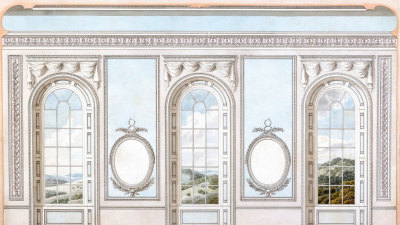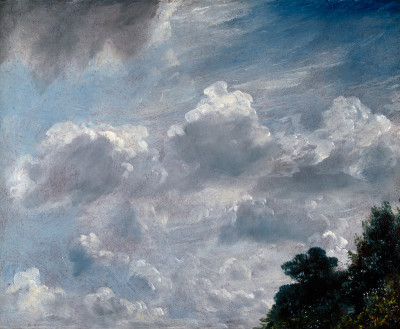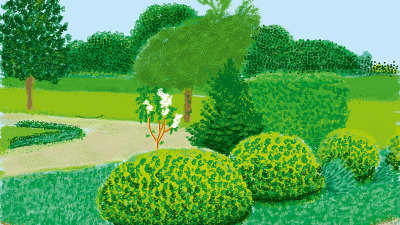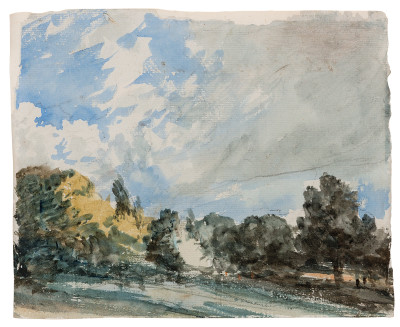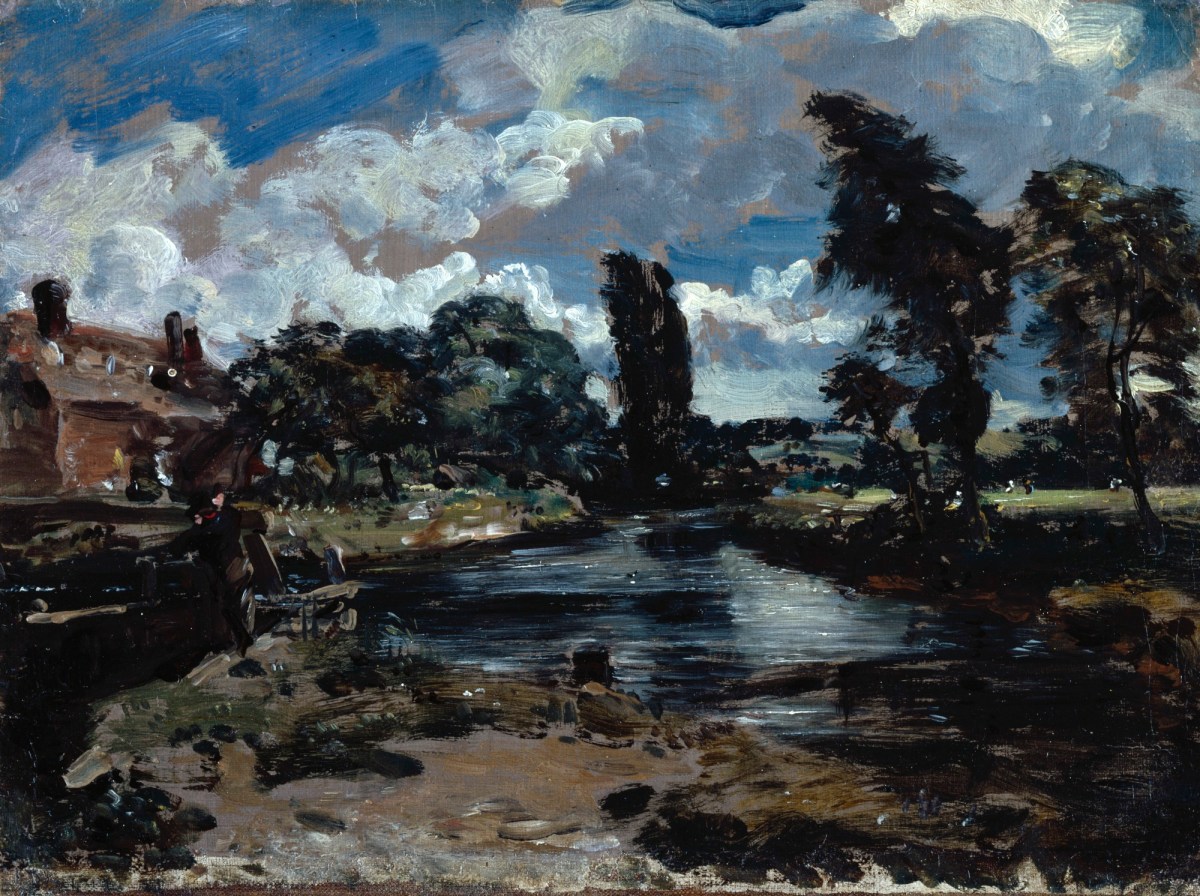
John Constable RA, Flatford Mill from a Lock on the Stour, ca. 1811.
Oil on paper laid on canvas. 260 mm x 355 mm. © Photo: Royal Academy of Arts, London. Photographer: John Hammond.
This image is not available to download. To licence this image for commercial purposes, contact our Picture Library at picturelibrary@royalacademy.org.uk
Flatford Mill from a Lock on the Stour, ca. 1811
John Constable RA (1776 - 1837)
RA Collection: Art
Constable uses a brush thickly loaded with paint to create a sense of movement in the trees and water. Working rapidly and in the open air, he captures a surprising amount of detail including the tiny figures of haymakers working in the fields beyond the trees and the light falling on the water.
This sketch depicts Flatford Mill in East Bergholt which was owned by Constable's father, a corn merchant. The River Stour was used by barges to carry corn and coal from mills along the river to the sea.
Throughout his career Constable painted many oil sketches representing the seventeenth-century corn mill where he grew up. His father, Golding Constable, continued to conduct his business of milling corn in Flatford Mill as well as Dedham Mill.
This sketch and other sketches were preparatory studies for a painting of the scene which he exhibited at the RA in 1812 Flatford Mill from the Lock (Private Collection).
Flatford Mill from a lock on the Stour, one of Constable's earlier works, demonstrates his affiliation with his childhood home as he associated the river Stour with his 'careless boyhood.' Constable's scenes are rooted in the memories of his childhood landscape which acquired a deep emotional significance for him. Although in this composition the river, trees and sky dominate the view, he provides details of human interaction with nature via agriculture and industry with the inclusion of reapers in the field beyond the trees. It is said that Constable painted this sketch to explore possible ideas while preparing a painting with the same composition.
Constable is known for his impasto technique, which uses thickly loaded brushes or palette knives. In this sketch, which he worked on in the open air, he captures the light and a sense of movement in the trees and water with loose brushstrokes.
There has been much debate surrounding the date of this painting due to Constable's inscription on the back, which may read 1810 or 1811. Constable was known to have painted in Flatford in these years due to his mother's letters. In one, dated 26th October 1811, she wrote 'Your Father ¦rode down to Flatford. Your pretty view from there is so forward and I am certain it will gain an applause, for everyone approves it'. (Beckett I, p.67)
In composing this sketch,Constable may have been influenced by the two 'Seaport' paintings by Claude Lorrain (including Seaport with the embarkation of Saint Ursula) then in the collection of John Julius Angerstein. Constable is known to have admired these paintings (Gray, p.114).
Further Reading
Ian Fleming-Williams, 'John Constable at Flatford', Connoisseur, vol. 204, July 1980, p. 216-219
Graham Reynolds, The Early Paintings and Drawings of John Constable, New Haven and London, 1996, Text Vol., p. 167, cat. 12.6, Plates Vol. pl. 934
Sarah Cove discusses ‘Study for ‘Flatford Mill from the Lock’, pp.525-529 in Leslie Parris & Ian Fleming-Williams, Constable, exh. cat., Tate, 1991
Anne Gray and John Gage, Constable: Impressions of Land, Sea and Sky, exh. cat., National Gallery of Australia, 2006, p.114
Object details
260 mm x 355 mm

